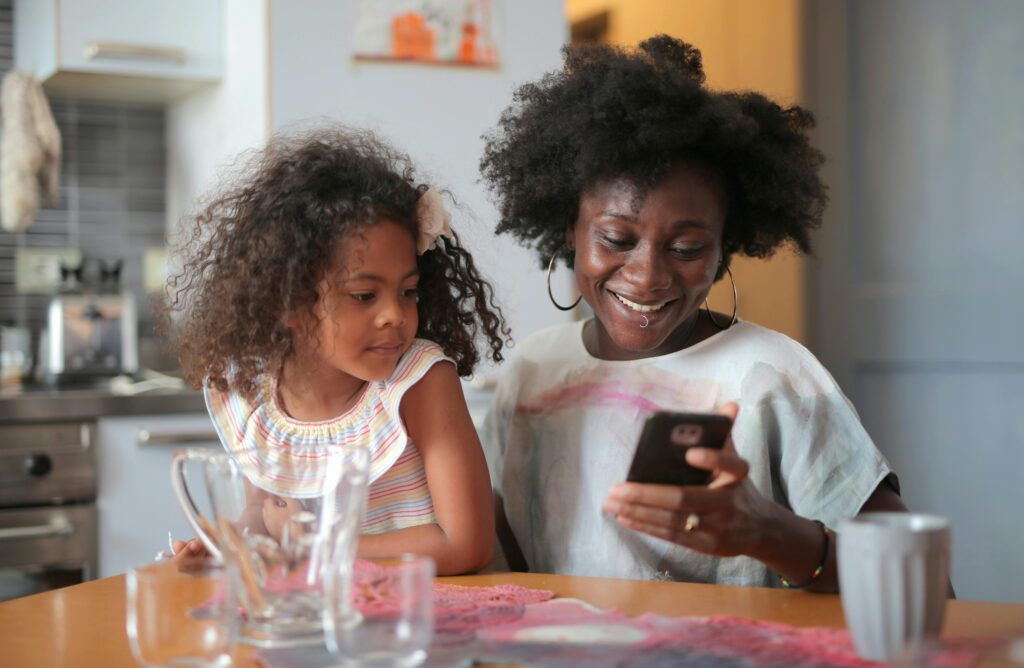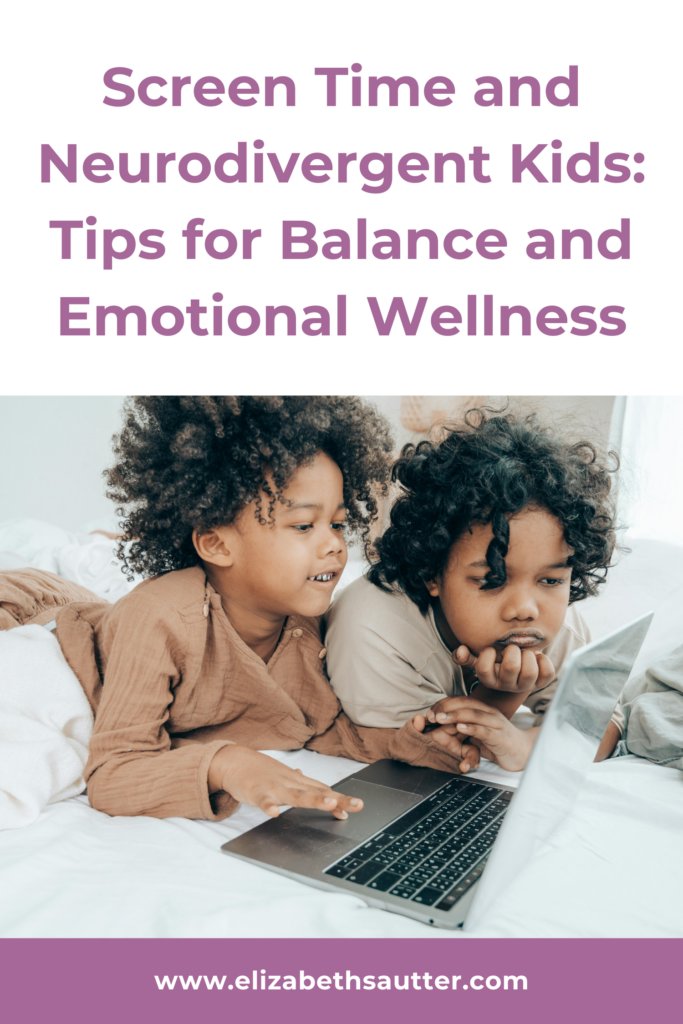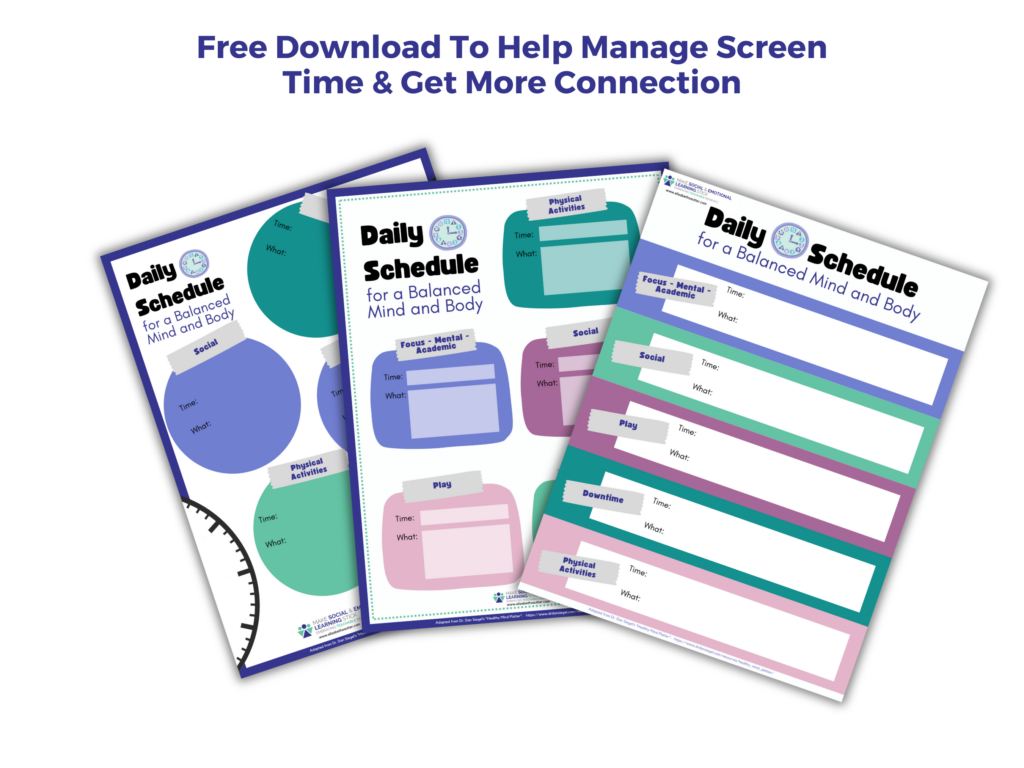Understanding the Pros and Cons of Screen Time
The Benefits of Screens for Neurodivergent Kids
Screens, when used intentionally, can be powerful tools for:
- Emotional Regulation: Mindfulness apps and calming games help children manage stress and anxiety effectively.
- Learning and Engagement: Interactive apps like those recommended by Common Sense Media make abstract concepts more accessible, supporting executive functioning and social communication.
- Connection: For children with social anxiety, video calls and online communities can foster safe, meaningful interactions.
The Challenges of Screen Time
Despite these advantages, screens can pose challenges:
- Overstimulation: Fast-paced content can overwhelm sensory systems, increasing emotional dysregulation.
- Focus Issues: Over-reliance on screens can hinder task initiation and organization, key components of executive functioning.
- Reduced Play Opportunities: Too much screen time may limit imaginative play, critical for social emotional skills.

Parenting Tips for Managing Screen Time
1. Model a Healthy Relationship with Screens
As adults, our behaviors set the tone for our children. Demonstrate balanced screen habits by prioritizing face-to-face interactions, mindful use of devices, and regular breaks from screens.
Parenting Tips:
- Show intentional screen use by talking out loud about your choices:
“I’m using my phone to check our dinner recipe, and then I’ll put it away.” - Turn off notifications and put devices in another room during family activities.
- Replace scrolling with connection: “I’m going to take a break and color with you instead of looking at my phone.”
Scripts to Try:
- “I’m turning off my phone so we can focus on this game together.”
- “I’ve been on my computer a lot today. Let’s take a walk to recharge.”
2. Build Connection Through Play
Prioritizing play over passive screen time nurtures creativity, strengthens relationships, and fosters problem-solving. Whether it’s a board game, an art project, or a sensory-friendly activity, these moments help children develop critical thinking and emotional regulation skills.
Parenting Tips: Incorporate play into your daily routine. For example, have a 10-minute family playtime where everyone engages in a non-screen activity together.
Connection Tip: Use playful activities to model social communication. For example, during pretend play, practice turn-taking and encourage flexible thinking.
Crafting a Family Screen-Time Plan
Key Components of a Screen-Time Plan
- Establish Clear Expectations: Define when and where screens are used (e.g., no screens during meals or before bed).
- Incorporate the Health Mind Platter: Balance screen use with time for physical activity, mindfulness, and connection.
- Involve Your Child: Collaborate to set rules, giving them a sense of ownership.
Parenting Tips: Use tools like visual schedules or checklists to make expectations clear and easy to follow.
Scripts to Try:
- “Let’s decide together how much game time feels good today.”
- “What other fun activities can we add to your day besides screens?”
Strengthening Social and Emotional Learning
Foster Social Communication
Active Listening Techniques:
- Pause what you’re doing to make eye contact with your child.
- Paraphrase their thoughts to show understanding: “It sounds like you really connected with that character.”
- Ask open-ended questions: “Why do you think they made that choice?”
Scripts to Try:
- “How do you think that character felt when they lost the game?”
- “What would you say to cheer up a friend in that situation?”
Encourage Active Participation
Rather than letting your child passively consume media, engage with them. Play games together or work on creative projects inspired by what they’ve seen.
Example: After watching a nature documentary, try crafting animals from clay or drawing your favorite scenes.
Handling Screen-Related Challenges with Compassion
Recognizing the Root Cause
Transitions from screens can be tough, especially for children with ADHD symptoms or heightened anxiety. Acknowledge their feelings and work with them to ease the shift.
Active Listening Techniques: Validate and reflect your child’s feelings. “It seems like you’re really upset that game time is over. What can we do together to make it easier?”
Scripts to Try:
- “I know it’s hard to stop when you’re having fun. Let’s plan another time to finish this game.”
- “It looks like you’re upset about turning off the TV. What can we do next that’s just as fun?”
Setting Boundaries Without Conflict
Frame boundaries as supportive rather than restrictive. Highlight the benefits of breaks and suggest engaging alternatives.
Scripts to Try:
- “Our brains need a rest from screens to stay strong. How about building a Lego tower instead?”
- “I’m turning off my phone for family time. Can you turn off your tablet too?”
Proactive Strategies for Success
Leverage Resources Like Common Sense Media
Explore reviews of educational apps, games, and shows to ensure screen time aligns with your child’s developmental needs.
Be Flexible but Consistent
While routines are important, allow flexibility to accommodate your child’s emotional and sensory needs. For example, if they’ve had a tough day, a calming app may help them transition back to regulation.
Celebrate Non-Screen Moments
Make a habit of recognizing and rewarding time spent on non-screen activities. Share these moments during family discussions or a strengths-focused activity.
Script to Try:
- “You worked so hard on your puzzle today! Let’s take a picture to show Dad.”
Takeaways for Parents
Managing screen time isn’t about rigid rules but about creating a balanced approach that prioritizes connection, emotional regulation, and social development. By modeling healthy habits, building a proactive plan, and fostering creativity through play, you can turn screen time into an asset for your child’s growth.
Explore more tips and strategies on my blog:


